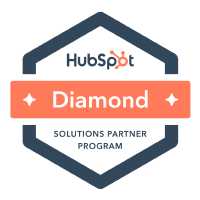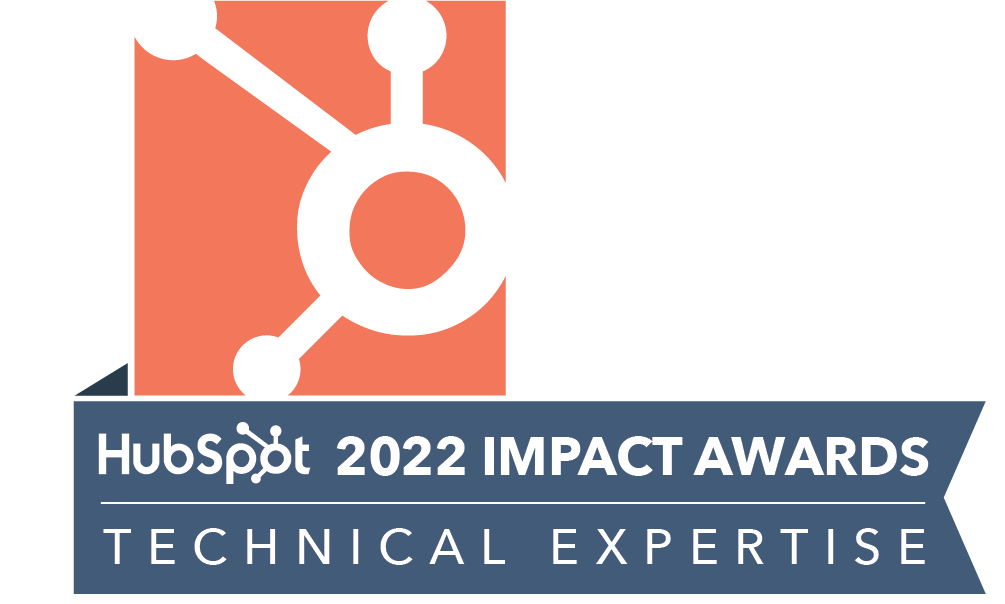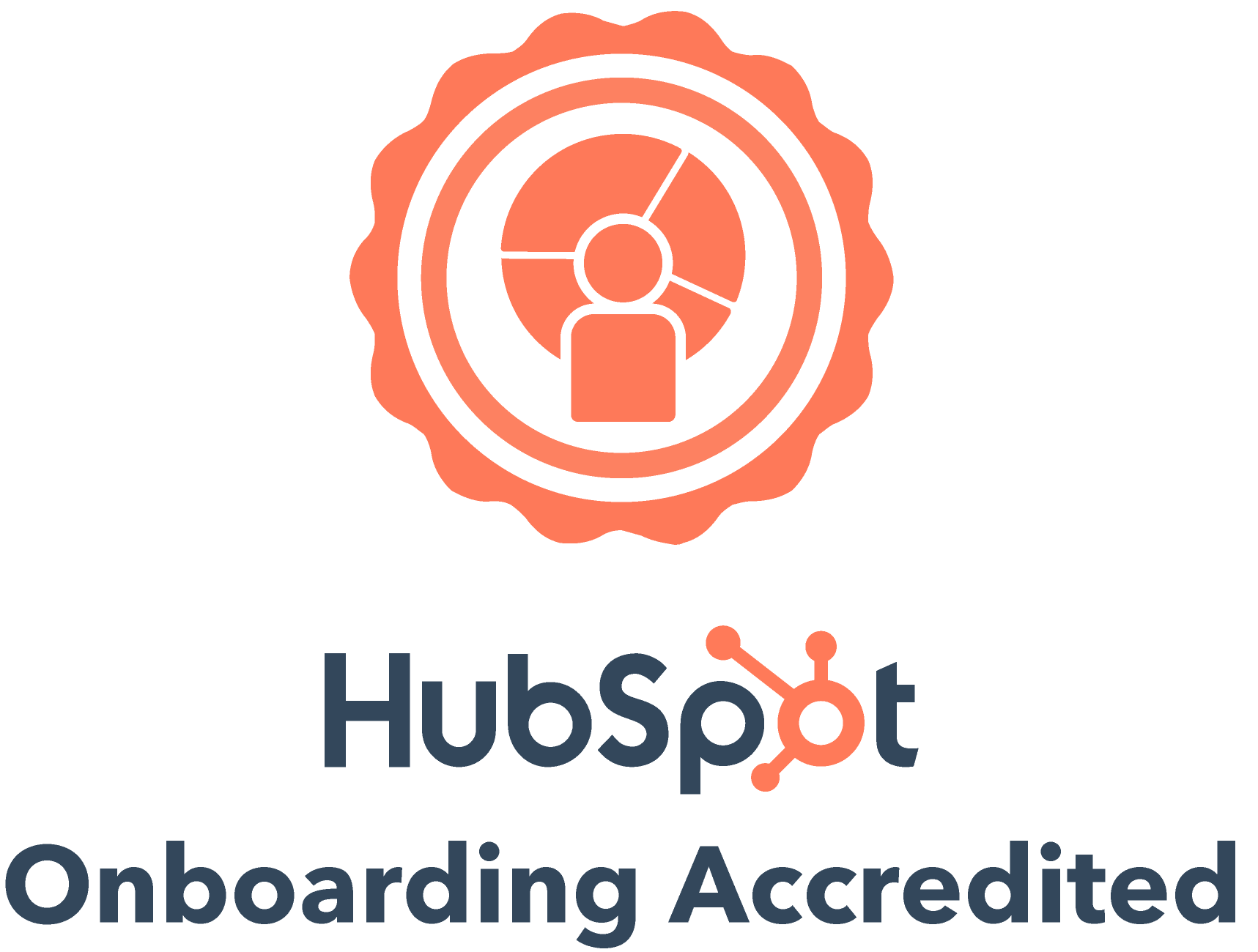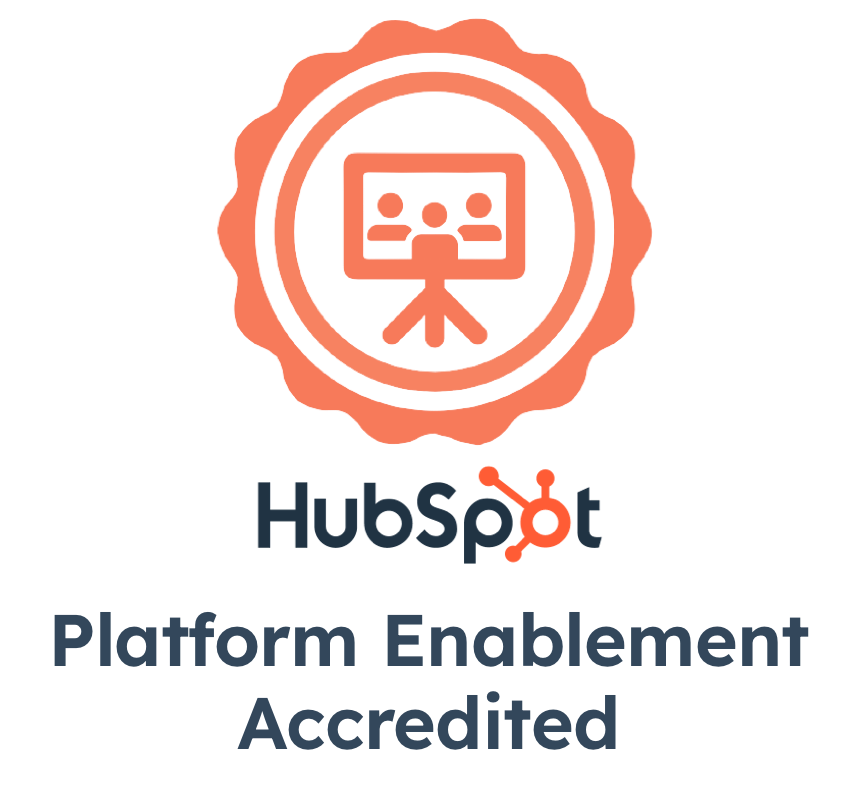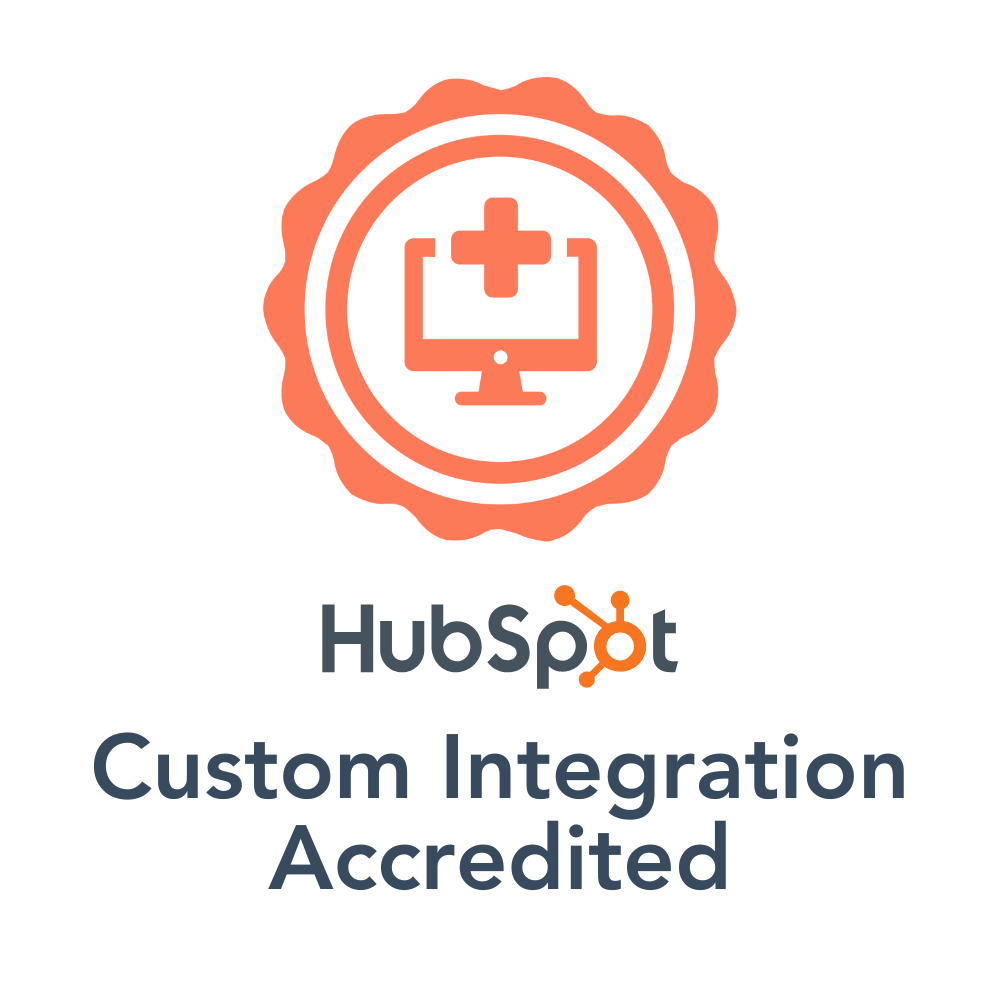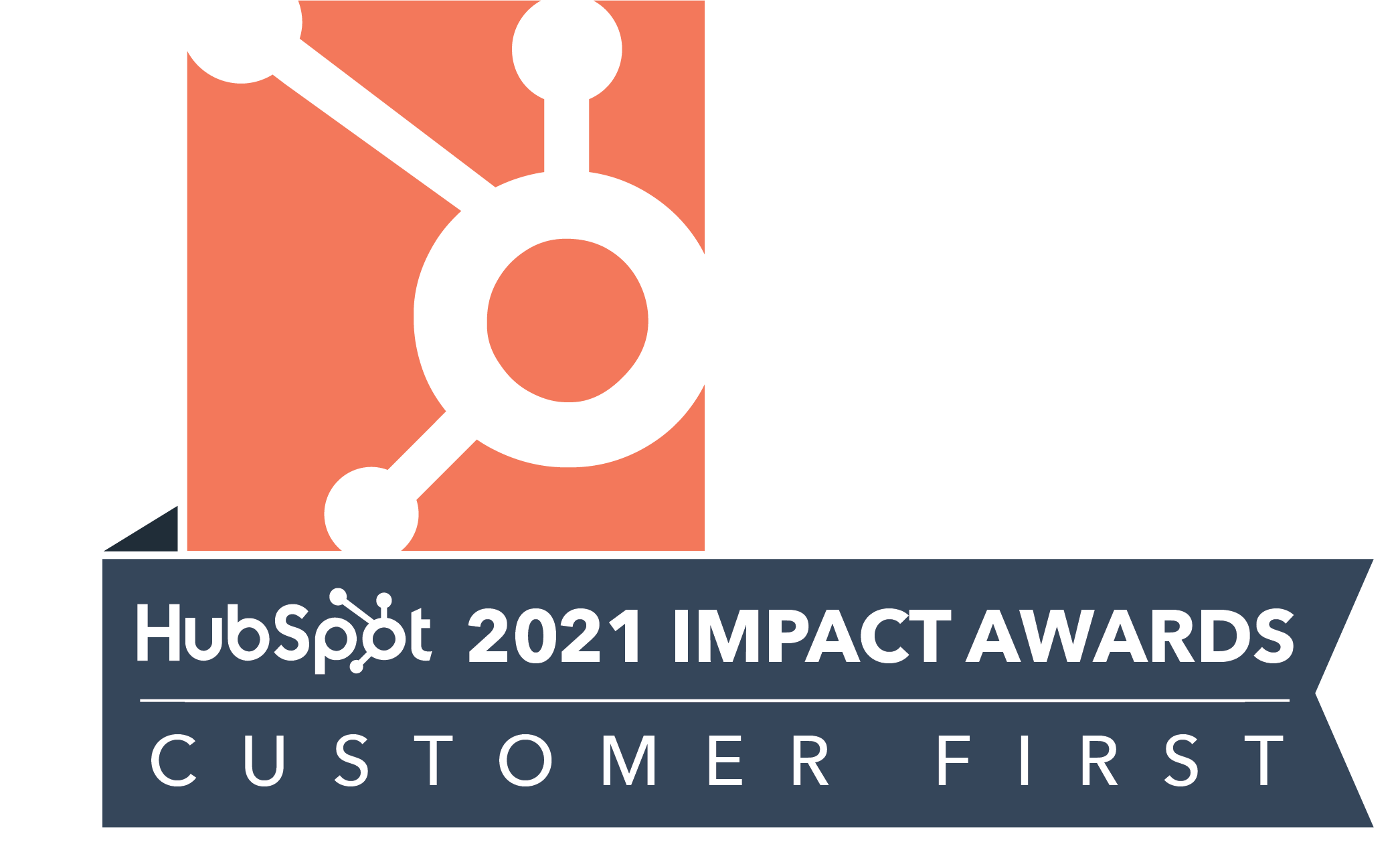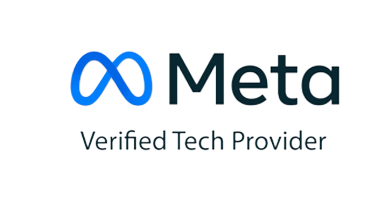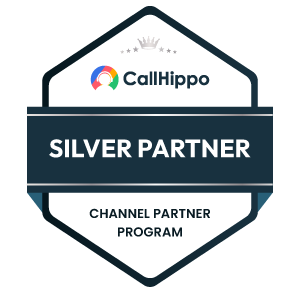What does it take to hyper-personalize the customer experience for an audience that runs into millions? Darshana highlights how technology solutions help drive customer engagement at scale. And shares how leaders can evaluate and deploy the right martech solutions to deliver on changing customer expectations and ROI commitments.
Find out all that and more right here👇👇
Listen on Spotify >>
Panelists:
- Darshana Shah, Chief Marketing Officer, Aditya Birla Capital
- Adarsh Noronha, HubSpot Country Head, India & SAARC
- Suma EP, Co-founder, Niswey
Timestamps:
- 00:00 - Podcast and panelist intro
- 01:39 - Empathetic leadership and how that impacts business
- 05:43 - Customer journey and hyper-personalization in a BFSI business 09:25 - How Aditya Birla Capital delivers personalized customer journeys
- 12:03 - Don’t get married to a Martech platform. Evolve with the times
- 15:04 - AI and its impact - for better or for worse
- 19:02 - Digital-native teams and what they bring to the table
- 23:11 - How to evaluate the potential ROI from a Martech tool
- 30:27 - The BFSI/fintech growth story in India
- 34:09 - Balancing speed and scale of operations with near-zero margin of error in BFSI
- 35:30 - Changing trends in customer expectation and how leaders can keep up
- 42:11 - Darshana’s Martech deployment best practices
- 45:01 - How do you ensure martech adoption within a large organization
- 47:49 - Darshana’s top learnings from her Martech journey
- 52:53 - Concluding thoughts
Discussion Summary
Suma: So I want to start with something that I saw yesterday on LinkedIn, on Darshana's feed. She wrote about empathetic leadership. And I know that Adi, you have, you love the word empathetic. So I'm also going to come to you after that. So, but I want to start off with that because that was very curious, you know, it's not, the way she wrote that LinkedIn post is very clear that she truly believes in that concept. And she has stayed with that concept, not just at the surface level. She talked about dichotomies and things like that.
So I want to bring that in just now and ask Darshana about, you know, empathy and martech. How do you like, how do you like marry the two in your head? How does it work?
Darshana: I don't know. I mean, maybe one is heart and one is mind. To me, martech will be more mind. Empathy is heart. Because you really, empathy is, you know, as a person, as a culture, I mean, there are many things in it, right? And I think in COVID, we saw that really getting amplified. And so, yes, to me, that will be more the heart and soul of how you do, how you conduct yourself, how you carry your people, your company, all of that. Martech is the, it really is the backbone on how you communicate, how you engage, with your end customer, your consumer at large, all of that.
So yeah, that's where I think, Suma, it is the whole mind and heart story.
Suma: I like that you use the word heart, and that's where I hand it over to. Addy, what do you want to say about empathy?
Adarsh: The reason why Suma is stressing on the "heart" Darshana is because I represent Hubspot and our culture code is based on HEART values. So we have a heart as a symbolic gesture of the values that we stand for and it goes on. Everybody in HubSpot lives by that. And it's a culture code.
No, unfortunately, we don't do that, nor the Korean heart. It is a binding factor for us. And I feel having worked in many companies, this is one place I've seen people really, really living up to those values. I think it's the way we hire.
Everybody is empathetic to each other. There is Such a beautiful camaraderie to work together. It seems like we hire similar kind of people or so or some secret like that is just the entire company. 4,000, 5,000 people that we are, everybody is very much grounded and very, very empathetic. So that's why I think Suma was stressing more on the idea.
Darshana: That's interesting because I think that brings the, see that's where your productivity, that's where the innovation, freedom, Agility, a lot of things start interplaying because of empathy, that one thing that human being needs. It's not an easy journey. So I'm glad that you guys, I like the heart value that you guys have.
Adarsh: Very truly, you kind of touched the right nerve there. Because end of the day, we figure that employees work more than the amount of time they spend at home with their closed ones. At least some of us, you and me, I'm sure we spend three fourth of our lifetime here and then rest of it that side. So if it doesn't feel like getting up and coming to work every day and with the people that you're surrounded, then the battle is half lost there. So very well articulated. But back to Suma, sorry, we kind of digressed from the topic that we want to discuss.
Suma: I wanted to, I wanted, you know, this is Martech CXO Dialogues and very rarely will we get the chance to talk about empathy. So I thought this was the chance to bring it. So I use that opportunity. Okay. So I think we'll just dive into the next question, which is, can you talk about the customer journey in your specific space, the BFSI space? What's it like, What are the challenges, pain points you see?
Darshana: So see, I'll tell you, you know, for us who are, I don't know, I'm going to use the word as first generation of marketeers or early market, you know, career marketers. This whole space has evolved really exponentially in the last couple of years. And also, so what has happened is a couple of things in the background. Consumers have started looking at, so because the consumer journey has got more and more complexe. Because now you have so many touch points. Earlier it was easy because it was, I'm born in a physical, the brick and mortar world.
And from brick and mortar, where we were looking at those experiences, we were blending the brick and the, you know, click world. And now from, and then it became fidget drill, and now it is omnichannel. So this whole world of omnichannel, you know, one is You are acquiring Omnichannel and you have to service Omnichannel. This is where, and then now the new layer was that, I'm talking about the journey I've seen this thing evolve, is personalization. Because we are living in a world of instant gratification, people want, so the brands have to talk to me as me and understand me, because now I have so many, you know, so many people talking to me, it's cluttered, my email is cluttered, I have so many apps, I don't have that space, like, today, we think so many times that, you know, should I create an app?
And what is the reason that they will download? There's so much art and science of why a customer will download, why will they engage, how will you have your DAU, MAU, all of that. So different matrices. And now I'm saying as a career in 26 years, you have evolved. There was a big data world. Then it came from, you know, whilst data and analytics is still the backbone. Now there's a whole MarTech world. In MarTech now there are CDP platforms, there are DMP platforms, there are, you know, so many things happening and so much is not easy because to constantly decode.
That's what I'm saying, that so many people come, like, I genuinely sometimes get confused at who is really a CDP platform. So what do we do? So in the consumer, because yes, today, so where I'm saying that consumers have so many choices, And because so many people are talking to you all the time, through all, we have bots, we have WhatsApp, we have everything. And everything is on top of it is always on. Because earlier we had that 10 to 7, 9 to 10, whatever life. Now everything is 24 hours.
Your ORM is 24 hours. So imagine what you are setting yourself for. This is the complex world that we are living in. And in that, consumer has all choices. So to ensure day in and day out that you give out that best experience, which is what you are fighting for against your brand or the competition at the end of the day. So that's why to me, that's where the whole, and of course, that's where technology has to be a backbone. Gone are the days where you're doing DMs and you're doing physical.
And finally, as a marketer, I want to have that one view. Because the discovery is happening to some other platforms, and delivery is happening somewhere else, and servicing is, you know, and then you want retention. You are talking about lifetime value. Look at the kind of KPIs that you have. You're setting this up. So there are internal KPIs, consumer expectation, competition in the background. So yes, that's where I think the whole technology, and this is where the whole martech world to me comes to.
Now coming to what we do in Aditya Birla Capital. So yes, it's been a journey. So I can talk about when I had started in health insurance, because our focus was on health. We were a health first brand and not just insurance, which is basically just, you know, paying all the time off, you know, in eventuality. But now if I want to talk on health, I want to keep you healthy. So we have an app which, you know, makes you walk 10,000, which counts your calories, 10,000 steps, all of that, and give you money back, your premium back.
Now in that entire thing, so we have lots of partners integrated. And to get because people are different people and the different behaviors of their health journeys. So that's where my internal marketing experience over here we started from, what is my data Mart, you know the data lakes for the data, because that's where first thing first because of the health insurance and you're taking in. Secured and unsecured, I mean structured and unstructured, all kind of data. So how do we first of all get that all eventually to make sense, because there are data written on those prescriptions, on you know all those kind of things.
there is one entire background, so there is one entire layer coming from there. Then we also on top of that want to personalize or decode that data and personalize the journeys. Because if somebody's got diabetes, somebody's got cholesterol, somebody's got blood pressure, I want to now start customizing it. It is and we were working in the journey of first it came as cohort people like you. So that was the days when we started with people like you and then so what then you realize that no health is not about people like you.
Health is about n is equal to one. It's about me because my If I have diabetes or I have cholesterol, you have to talk to me. So that by itself is a journey in the background, because the way you capture data, the way you store data, then you analyze. So there's a different partner there. And after analyzing, you create a communication which is structured for the individual, how you disseminate, and what platform, because now there are personalized platforms, this is where your CDPs and all that come in, because what, and your personalization that what platform is a person going to engage more?
Is it your app? Is it your web? Is it contact center, is it WhatsApp, bots, whatever. And then again, getting all of that back. And also it all has to go to the IVR. My agent, if they get a call, they have to be able to see. So I'm saying this is the world that I, I think in the five years, six years that I was with health insurance. So we were building. So yes, it came with the challenges because I can tell you there are some partners and like say, we all work on Adobe. Then came these more intake, because Adobe is great, you know, a great suite of different, different products, but highly complex and expensive.
Then started coming more, then started coming in more and more all in box kind of, you know, solutions and SaaS solutions, a lot of things, you know, different, different things that are coming in. So for us to realize that, okay, you can't be married to a solution anymore. Every couple of years, and I'm saying years, maybe now year, month, I don't know, things are changing, things are evolving for different platforms. I had different partners, then it became the whole omnichannel world.
So we had to tie up all of that. Then it came into a one view. And that's where we were talking about Salesforce and all that's where our CRM also, you know, takes takes in place and how do you see all of this together and get that one view. So to me it's a journey and it's a continuous journey because different things at different point in time. But I know one thing that I keep telling to the CEOs and I go and tell the board also that today's day and age you can't be married to a platform.
Suma: Yeah.
Darshana: And specifically the legacy company like us, and you will see a lot more in banks and, you know, elsewhere, because if you're so deeply entrenched, that to get out of it is difficult. And that becomes a big challenge. So today's world is to learn fast, fail fast, do POCs, keep learning, discovering, and I keep meeting people every day.
Adarsh: That's such a refreshing statement coming from a top executive like you because seldom do people realize the world is changing big time and the technology that was there four years ago, five years ago is now obsolete. Sometimes you see technology of last year is obsolete. But because we are such a big white elephant ourselves as an enterprise, and there is nobody to build the cat, no one person, but a plethora of a group of people that are needed. You will see there the laggards in adoption of these things, the agility is missing.
And that's where the smaller enterprises score, I guess, they get that freedom to try out new things. I think executives like you can make a difference. I'm very happy to hear what you just said, because it's no longer the age of, I've been here for 20 years, so this is what is the benchmark. Take it. Those kind of vendors will find it very hard going forward. Now, things are moving fast. If you're not agile enough, I don't think so you will survive for a long time.
Darshana: Young startups are challenging the IBM's and Oracle's and Microsoft's also. We are getting out. So yes, it's a very fast world and you can see what AI has done on top of it.
Adarsh: Totally agree. I'm keen to hear, because you brought up AI, I don't want to let that flavor go. I do hear very mixed feedback. There is one section which says, it just glorifies us, it makes us more efficient, it improves our productivity and makes us look more sophisticated. Whereas there is another team that is scared of AI so much that they think it is replacing everybody. Where do you fall, your thoughts fall, Darshana?
Darshana: But there were many times that we earlier also heard when different technologies coming in or will they replace us and so all this is an ongoing thing I don't think anybody can replace because that's rare. The heart, the, you know, the emotions, the behavioral science, all those kind of things is more and more human, you cannot, like nothing can take away a face to face conversation, nothing, that's what we realize rather than coming back to office, those small talks at coffee, those lunches.
So that bonding. So in my mind, I don't think there is, yeah, I mean, it is scary a world, no doubt. And as a marketer is only more complicated, because imagine you have to constantly unlearn, learn, unlearn, learn. So you have to be ready for that. But having said, I don't think anybody's taking away, I think it's only bettering that experience. And that is that makes the consumer more and more, you know, demanding now. Because they're so spoiled for choices. So yeah, well, I think AI is doing something.
No, I mean, imagine if I have to answer this, and there were a set of questions there, Chad Gipity is answering, giving me some pointers. So the world is becoming easier and complex at the same time. So I feel all these things are out to stay. You have to adopt it. You decide where. Can I adapt it? So like for me, AI is easy. We are looking at all our contact centers, for example, all our agents.
How do we make their lives easy?
How do we bring that down? How do we make our bots more and more human? So the conversational bots, from what the earlier bots were, now they are AI-led bots, because now they're becoming more and more smarter, human, and all of that. So yes, that is bringing my cost down. That is bringing inefficiencies. They learn fast. Human take time. So some of these things are there, but at the same time, see what AI is doing? Google is apologizing. It's all out there. There's apologizing for Gemini.
So, I mean, you know, you will have all kinds of things happening, but I will say that we have to adopt it, adapt it to what is our journeys. Yes. And see how we can constantly improve the customer experience because customer today is more and more demanding. And the younger, the age groups that we are facing, millennials, Gen Zs, and you hear more about them, they want instant gratification. So they want everything. And also imagine, you know, so I'll give an example. You learn from Swiggy's or Zomato's of the world to tell me that the food is at the restaurant and the person is picking up.
Now that expectation comes to my claim payment in health insurance. They want to see that transparency that I have asked for the claim to show me where it is. So we had built an entire journey to show that it is yours with your husband. No, it is clearing the bills. It'll take so many days. That's the kind of transparency that you are learning from an analogous industry. Adding one in the cart. Amazon has showed us. Today you are adding insurance product, BFSI product in the cart. So I'm just saying that you are learning from analogous industries, but the consumer is now expecting that what is in a product company or a product platform, you want that in a BFSI platform also, from a tangible to an intangible.
So yes, we have to adopt, because that's a consumer behavior. I cannot say I will not do it. So I think that's the one and obviously for that you need technologies and it's not an option.
Suma: I also wanted to bring in the angle of your own teams, right? They are also, you know, more of millennials and Gen Z's coming into the system and them adopting these new technologies and there also you will face, you know, they may come in AI-enabled or they may not come AI-enabled, but the expectation will be that, you know, I will get some support, some AI-enabled tools and we will have to move fast and I have to get creative and those kind of things. So there is that challenge also that you as a leader must be facing that, you know, the new generation is also different.
Darshana: No, no, it is very challenging. So whilst I may have in this past 10 minutes spoken so many things, but there are lots of failures. There's lots of learnings. There is lots of frustrations. Plus, you are having the challenges are humongous. And, you know, sometimes you realize that what you have decided where you are envisaged something is actually not even going in that direction or the time frame is not in that direction. So there is there are many challenges there. And when you're talking about capabilities of you have, two kind of capabilities.
One is who are digitally native and who come with their expectations and one who are long term in the organizations, more expert in the domain expert, but technology adoption takes time. Now, all of us now know that digital is no more of function anymore. Technology is no more a function. It is almost a horizontal. Everybody in the organization have to be tech aware, digital mindset, you know, all of that. So these are the things that we are doing because today, so that's where first, and I think we all know that COVID has amplified that.
So all those learnings, all those trainings, Because you cannot say that that is a work of digital department. All of us have to have a, because you have to be customer first. If you are an organization who's putting customer at the center, then you have to think digital, you have to think tech. You cannot, and which means you have to learn all those complex things. So that's where, and it does come with its challenges. So now talking about the newer generation that is coming in because they're digitally native, they are faster.
But they also come entitled. That's another problem. And that's really truly a problem to, you know, for us to adapt and, you know, get them, you know, get them into our culture, working style, we to adapt to their working style. And, yes, they get frustrated very fast if technology is not working, which means, see, so for people who have been the people like us, we know how to do hard work without technology. I'm sorry, but I'm generalizing. But the new age, you know, people that these younger folks, they become entitled, they're born, so can't blame them, because they're born, they're, you know, digital native.
So they only know how to work like that. Like my son will tell me today, if I tell him he's just old, 14 and if I take away his phone, he'll say, you can't take away. But I said, No, you don't need it. No, it's part of my body, mama. And live without that part. I mean, so I don't think you and I would say that, right? So I'm saying, yeah, it comes with those challenges. So they are not able to work if technology fails, and technology will fail. So that's where the challenges start to, you know, because then your productivity starts getting affected.
You have to keep them, you know, motivated. So these are the things that the capability, training, and like I said, there are different kind of people in the organization. So yes, there is work cut out.
Suma: So I'm just getting a sense of the tremendous challenge like there is this SME workforce which is not digitally native and this is digitally native who have to know the business and we don't know yet and come with all newfangled ideas and marrying them across a changing landscape is like mind-boggling to me.
Darshana: No and I'll add the third challenge is your You know, your board, your people, because let's see technology is expensive. So now, every time you are investing, which means you have to talk about ROI, what you're going to give. So by the time you've gotten, and there are times where you just thought of some, because you've been shown something. So you, with that mindset, you put some KPIs, you start the journey and now it's not working. So imagine you've invested, you are half there.
The KPIs are not coming. Now we have to answer. So that's also the added layer of challenge, you know, you have to carry all of it along and it's not, it's not easy.
Suma: Wow. Addy, you were saying something.
Adarsh: Yes, so in Darshana's desk, I'm sure there will be at least 10 new vendors who will come and bother you every single day. There is obviously a lot of people who will wear colorful clothes and come and show their colorful best faces of their products and services. But end of the day, like you said, you're mindful of your team, your goals, and what you want to achieve as a brand impression to your intended audience. How do you balance all of this? Are you always on the lookout of a new technology so you spend more time there?
How do you balance the Martix fast developing technologies that is coming your way?
Darshana: I think that I will truly call out I'm lucky. I'm sitting on a chair where a lot of them want to meet me. I learn with them. So I have for me all this is an acquired knowledge because I'm not, I'm not born digitally native. Completely acquired knowledge, completely tried, tested, failed, tried again, knowledge. So yes, but yeah, we meet a lot of, lot of startups. So today also I met, you know, a company which has come from, it's a French company. Based out of Singapore, their AIPAC team had come, really interesting stuff that they're doing on web app, all the channels on, you know, how do you see your customer behavior?
So behavioral science is becoming more and more and how do you really, because when you start talking personalization and hyper-personalization, I don't even know, you know, where the world is going and what all this is. So when you're looking at all of that, so it is interesting to keep meeting. So where do I learn? I meet people. I, when I'm in forums, when you're networking, when you're meeting, you hear of something, but that excites me. Because as a, as a person, I, because I have a very learning mindset, or I want to know, I have a curious mindset.
So for me, this is what is interesting, but it does confuse. See, honestly, Adi, the more you meet people, you know, and the more you keep meeting, and there are some solutions which are very obvious, or you've seen somebody else doing it, it comes recommended and definitely, plus fortunately that I'm part of a large conglomerate group. So some of my group companies are using it. So it comes as a reference. So that way, it's an easier navigation to figure things out, find things out, get references.
You know, and at the same time, there are new things like there was a time a lot of companies from Israel were coming. A lot of tech solutions, specifically from the app engagement, because which is very, very more complex, the same. Now also I see people from then, you know, Germany started picking up Berlin and those kind of things. So interesting. So you read, you meet, you try and decipher, not everything I can sometimes afford, not everything my, because we are not a startup. So we may not, but at least you are aware what is happening, at least you are aware that what you are saying, no one in our kind of environment, we always have to do the cost benefit analysis.
Because don't forget our best friends, the CFOs, who are fine. So, yeah, so you are so but I think what keeps me excited that there's so many new things, but also it confuses now that's where sometimes I look for some expert guidance or advise myself that somebody in my group or something that you know I mean everybody calls them. I remember there was a time that everybody was the best in data. And then I realized, because that time when I was in retail, and we had these loyalty programs, and they were actually learning on a program, they would give those best picture theoretically, but active, you know, when you actually rubber hits the road, the theory is not working, because you're learning.
So I'm actually teaching. So I've gone through those journeys also, I finally answering and teaching. So yes, but that's why you need that expertise from somebody who can tell you to you know, see the thing and say that, okay, no, this is the right thing, because others, people are talking, but it may not be the right thing for me. So, because it's quite, you know, confusing sometimes.
Suma: So, when do you decide, when do you think this, when do you, when do you decide this is the right time I should invest in this technology or look for this technology? What time? How does it, how do you make that decision?
Darshana: No, no, very simple because today, see today we want to first very simple thing is ROI. What am I saving? What is my CAC? What is my cost of engagement, my cost of retention? All of those are hardwired numbers, right? And your agencies only come and tell you that, you know, because you can save like this. And so you keep learning. So anything, any platform where, so one thing I know very well that we have to do POCs. Without POC, we are not like proof of concept has to happen because is it finally giving me that some dimension on the KPI that I'm looking at.
So these are very, so ROI is one very easier. I mean, that's an easier call. You do POC, it gives please. And then obviously you're doing the industry reference for our, from my kind of organization, it's also about scale because we need partners who can, who are ready for our kind of scale because I don't want multiple partners, my CTO. And like one of the things I forgot to mention today, CMOs and CTOs are all blurred lines because, you know, has to also be a CTO. I mean, I have to understand.
So when I'm talking to the technology head, I also have to make sense to him why I want it, because why I want this change, right? So there, ROI or SUMA is easy. Anything which is then more experiential. Then you're looking at areas that, is it a short term? Is it disruptive? So today, I was playing with one technology which was generative. But it would, if you've taken a celebrity, the celebrity can talk, I mean, can send personalized messages in their voice. So I can say, dear Suma, dear Adi, hi, whatever, and do it in multiple languages.
In India, don't forget languages also. Or something, so it is interesting. Is it going to give me an ROI? No. But it is experiential. Is it disruptive? Have I seen some of the global platforms, global brands doing it in engagement? Then the call comes from there. So it's primarily, is it ROI driven? It is experiential. Is it just project-based and putting in some money and just piloting? So there are different filters. It's not just one. Today, it can't be one. Some are more making a brand as a leader, because as a brand, I'm not, we are large, right?
So we want to be seen as leader in adoption from that perspective also.
Adarsh: A while ago, you mentioned some of the startups from Israel, Germany, that part of the world coming in with more newer age products. I'm also intrigued by the depth at which you just spoke about what you do internally at Aditya Birla. And I'm gauging most of your competitors also are, if not as much, they're up there with the depth, right? India's financial BFSI segment as such probably looks like the leading cohort of adopting these fintech solutions. That's what I hear, I feel from what you're saying, Darshana.
I'm just keen to hear more. Is it true that we are the leading force globally when it comes to adoption of these technologies?
Darshana: 100% leading and very proud because, Addy, just the India growth story, you were sitting in You know, a very small continent, like I'm talking about Singapore, India. 140 crore, you know, people. So population and look at our India digital stack, what has happened. So just by what the government has done, what has happened exponentially in the payment side, additional adoption, look at where all, you know, in microfinance, where all it has landed. To me, payments is the fantastic game for BFSI.
That's been one big you know, complete game changer disruption. And that happens on the back of India digital stack. Right. So today, what when ONDC is coming, OCEN is coming in. So there are so many things that as a brand like us, we are obviously the first mover advantage, we are partnering and all of that. We are learning at that level, because we are all about scale. Remember that. So for us, everything that we do has to be scalable to that level. So absolutely, India is ahead in, plus the youth.
So because of youth nation on one side, the world digital growth story on the other side, and so the adoption, because youth understands digital, and they are adopting very fast. And the whole year and now that they want because of that. So obviously the brands have lashed out. So today there are lots, the fintechs have disrupted. They've come and done the kind of things that India is today. India is taking this to many countries, this solution that they have.
Suma: So absolutely.
Darshana: So when you are sitting in this kind of a country with this kind of things happening in its own environment, obviously you want to write and obviously you want to be part of it. And that's where obviously the learning is coming.
Adarsh: I honestly had goosebumps when you started answering it because somebody who's been born, the patriotism in us really comes out when we lead something so magnanimously, isn't it?
Darshana: No, it is. It is fantastic to see what is happening just to be there gives you that. Oh my God, that is so much. And when that's where the startups of India, right? Yeah. Do you have a problem and solution startup, you will make money.
Suma: And the penetration is just scratching the surface right now, right? We are not even in big numbers. So the potential is just untapped right now.
What is it going to deliver?
Darshana: And for everything else, you need money. And as NBFC, what we actually are, what the category that we've created as a brand is called money. Capital is nothing but it is helping you fuel your ambition by helping you manage your money, your money needs. So that for us is an exciting space to be.
Adarsh: How do you manage the scale versus the speed and agility we spoke? You spoke about a two-minute loan. But the scale with which you lead to operate, and I'm thinking how much of it, and there is no room for error. One customer could be one among the million for you, but for that person, it is his life. So how do you balance this?
Darshana: It does, of course, like any tech startup, a lot of, you know, test, you know, feasibility, quality, strength, I mean, all of that, all kind of what you do, the pre-prod and all of that. So we do, of course, that goes without saying, but do we not fail and specifically when you are lending, it is, see also remember we are regulated. Or completely regulated. So we have to be true to that. And now the new data privacy laws, cybersecurity, I mean, there are many things which is lying, we have to be compliant.
To all of that, and keeping that in mind, it's not that just because I have a platform, I'm opening up to everybody and giving out. That's not the idea. We have a platform, but we are still controlled. We still make the choice to whom we want to give. So underwriting norms, compliance, all that is out there. But what I meant is on scale is that what we build has to be on scale. To open that tab or how much to open the tab to how much is controlled.
Adarsh: Nice. I wanted to elevate a conversation towards customer experience. We have been looking inward in this conversation so far. What trends have you seen? Because you lead that segment where you are. Are there any notable changes that you want to highlight for the audience who is listening here? I'm sure the audience is a mix of leaders who are in your field as well as anybody who is aspiring to be part of this industry. So what would be the notable changes that you are seeing and can sustain for future?
Sorry, I'm asking you a bit of forecasting also, like I said.
Darshana: So say for me, for everybody, customer experience, every brand was customer first. It's important only today, there's no doubt. But so if I can talk about Agra Villa Capital, what happens is my different businesses by itself are very big. And for me, let's say a simple journey, like if customer wants to come, if there's customer grievance, for example. Now, there are different channels because that's what I said today, it's only service channel. Customer can come to your branches, they can come to your contact center, they can come on your app, web, WhatsApp, wherever you are.
Or they are ranting on your social handles, right, if there is a response for anything like that. So, what is important when it comes to experience, it is that one ABC. So, we say that we are one brand, one experience, one Aditya Birla Capital. So, no matter which business of mine you have bought things from, the experience has to be same across. And that is a more challenging or more interesting journey that we are creating today because that's where everybody has to have, because the processes behind have to be seamless.
The tasks have to be seamless. So let's say if I, a very simple example of ORM, you know, if a customer is writing on a social handle, what am I responding? How fast am I responding? Is it real time or not? So planning all of these things, what can ABC at the central level do? And what can businesses do? Because finally, the resolution has to come from the business. Because like I said, regulated, they have the final operating team sitting over there. But bringing this entire experience together so that the consumer, I mean, the customer is seeing it as one undifferentiated or seamless experience.
So by itself is, you know, this is because we are multi, multi large businesses in one. This thing is, you have to imagine it that way. So all individual businesses are larger and now bringing all of that, so bringing 10 businesses together and saying, listen, the customer experience is seamless. So whether you're buying a life insurance today and you're buying a mutual fund tomorrow and you're taking a loan day after, you will get the same, you know, experience, the tax. Will be same as what is told to you, same, the communication is same.
So that's the journey I've onboarded. And while we're trying to fix that, once we are there, but of course, can I give a customer promise that, like this two minute long, can I give a promise, a service promise that you take anything from me and this is my service guarantee? I think that will make the difference today, because that is what a customer... And because, I'll tell you, globally, because they... I have now been trained because people are traveling. So Amazon does this to you.
Ikea does this to you. So because I said people are looking at different industries and expecting the same out of BFSI or finance companies also. So we have to deliver that. We have to deliver to that promise. And yes, to me, that's where the customer experience world is changing. And in our case, we have to, wherever the customer is moving in any of my businesses, it has to be same promise.
Suma: Right. Amazing.
Adarsh: Do you have a team that looks into the future? Like they are the ones who keep tracking the trending and all that. Is there any advisors that you have? How do you operate at your level?
Darshana: No, no, absolutely. Right. I mean, today, I think all of us have to have, I think we all have to have one eye, two eye, three eye, I don't know how many eyes, because one is in today, one is in future, one is also monitoring what competition is doing. What are the white spaces coming in? A lot of things. So, like I said, there's no one answer to it. Definitely, there is a team. And there, I like these, that's where your young talent helps you, because they're born native. And because they're born native, they are fast in experimenting, they are constantly experimenting.
And to me, I actually learn a lot from them. So I actually they become my go to. I've told all the young ones in my team that they have to keep learning and you know, training me. So that is that simple, right? As a boss, you can always do the reverse learning or the reverse mentoring, because they are the guys who quickly and you learn at home from your children, you learn that the young team that you have at the same time was strategic. Of course, the you know, the agency partners are giving you what's happening.
The strategy team is looking at what is happening, you know, outside what are we the digital teams are looking out what new is happening in the market and constantly we also have something called as our Infinite, which is our startup series. We invite a lot of these tech digital partners who are doing newer things. We give them problem solution. Hackathons are happening. There are college students available for you to create these kind of things. So there are various things. So we do all of that to keep us aware of what is happening, what is globally happening, what is happening in India.
We also partner with a lot of them. We give them our problems. Work with them to help us in solutions. So yes, there are various teams who are doing these kind of things. And I think that advantage, like I said, that advantage is a conglomerate we have.
Suma: Awesome.
I wanted to get into, you know, you already mentioned one particular best practice that I have captured that you will always do a POC before, you know, adopting anything, embracing a new technology. What other best practices have you learned so far that, you know, before you roll out, you know, a new technology for your team or whatever, for the customer, what do you think? Keep in mind, what do you keep in mind?
Darshana: Of course, one thing is you are not, see, there is an amount of risk that you want to take and what you don't. Anything which is new, but which is also going to be, first of all, what is it solving for? Sorry, just one second, I can't see you guys. I am lost. Sorry. So first thing first, what is it solving for me? How important it is for us to do it today? So what outcome it is going to give? And we keep the consumer lens. So it's definitely a consumer lens. There will also be a business lens on both sides to see that why do I need it?
What is it solving from the consumer side? Competitive advantage? And from the business side, is it what KPI and what is there any cost savings or whatever? Or if not cost savings, it is definitely something which we should like, you know, if we are getting on, we are changing our CRM system to a newer system. And there, since CRM kind of systems, I can't do POC. These are large partner technology and these are tried and tested. And you know that now you have to onboard them because really realizing given the kind of tech world and the one customer view data analytics that we are building together as a foundation now today.
Not anymore good to do, but must do. It is no more a good to have. It is a foundation for us. So in these kind of journeys, what is giving us that foundation and that base for our next five years? Is also equally important. So those kind of technologies where we invest, knowing very well that we've invested for future. But there are some things which are very year-end now, solving for and giving me more savings or returns. And like I said, some are more experiential, which is not high risk, so to say.
You use it, try it, even if you fail it, it's okay. So I like, I do believe, and fundamentally I believe that you fail fast and learn fast. I keep telling my team that in some of these areas in technology, do 20 things, 18 may fail, only two. It's like that startup, when you put your money. Two will succeed, 18 may fail, but that two will give you that exponential. So the game is about exponential. The game is not incremental. The game is completely exponential. So if it is exponential, in a sense, if it is transformational, then, of course, you will have to go and do that.
And you will have to put your neck out.
Adarsh: Nice. Very cool.
How do you manage the change management in this? It is a complicated topic. But putting simply, you come across as somebody who's an early adopter. And you come across somebody who takes risks. And somebody who is well informed about the trends. When your team doesn't align, how do you manage that? And when it is your decision, how do you manage the change management?
Darshana: So there are many things, right? So given specifically in the role I am today, because I have to carry all the businesses together. Sometimes it's easy because of the sheer that I am leading the role. And when I strongly believe that it's a very clear call that we have to, which means, of course, I have to keep my boss aligned, the CEOs aligned. This is something that we want to do. And I tell the team that we have to do. See, clearly, you have to carry people along in this, and they have to buy your vision.
Because some of these things, They are intangible, right? You can't see it. But you know what it is going to give you. So you have to believe in the vision that one brings in. And that, of course, the team has to be aligned to. And so that much effort I have to make. It's very easy. See, I can very easily sit here and say that you have to do, but it doesn't work. That's where the empathy and leadership, that is where the style. Many things come in, but you have to really give that bigger picture.
You really have to. And there also, I need to say, More often than not, I need a partner also who comes with that credibility. So it's easier because I'm not selling the partner, because partner comes with credibility. It's just about what we can do with that technology or with that tool. So that's one part. After that, if there are laggards, then it's not an option. Because then it's not an option. So it's both ways that understand, learn, let's try together. But if there are still laggards, then they are just not an option.
And that's one way sometimes you really realize it. OK, let's try in one or two business where genuinely it will solve something. So let's showcase. Let's do it in two areas. Let's showcase. And there are businesses who will see that and adopt it. So there are, you know, different formulas. You have to decide how important it is. I'm currently trying one platform where I feel that few of my businesses can, year and now, immediately see outcomes. They're also more open and excited about it.
They will go in and the others will see what is coming out of that and then learn.
Suma: Also, can you talk about some project where you failed spectacularly and you have learned whatever. So, some learnings from there that other CXOs can learn from you.
Darshana: There are many, many times that, you know, I have failed. When we were doing our earlier days, the campaign management partnerships and, you know, they're constantly, most of the time, campaign management and trying like this, what I'm talking to you about is my entire MarTech journey. In some sense, I'm calling it a command center to say that I need a data lake, I need a warehouse, I need, you know, analytics happening on that to tell me what kind of consumer segments and creating personas on that, a personalized communication platform.
So this has been a journey by itself. It was not from day one I had all of these answers or had these ideas. We tried some things, bought in a partner with some promising thing, didn't work. I've had issues where I had to answer my CEO also that listen, it's not working and I have invested in it, but it's not working. So those kind of failures have also happened. I think what I have realized in this experience is specifically in the entire engagement, because more and more we were heavy engagement driven business.
It is not just buying and then forgetting because you wanted to engage. Now, anything which is app based. Imagine an insurance app trying to engage customers. So app-based things and driving engagement is difficult because there are many tools, there are languages that come in, there are short videos coming in. So there are different, different partners. So to me, there has been a lot of learning, there has been a lot of failures that we've tried to not work. We've gone wrong, completely wrong.
And sometimes apologize to our partners, apologize to our customers. So yes, those kinds of things have also happened, but the good news is that, I mean, as a marketer, as a CMO, for anybody to try these kinds of journey, because yes, you're right. I want to take those risks because if I don't take them, who will take, right? So if I have to do that, I have to carry the management team along. I have to, which means I have to be very sharp in For forecasting, what is my objective? Why am I doing this?
And I have to call out for the risk. It has to be more often than not calculated risk. Some AI platforms, those are different things that I tell my marketing team. Please go have fun. CGI. Please have fun. Let's do it. Those are different things. But some of these customer journeys, which you are building and where you're putting these platforms, you have to have the calculated risk at the back of your head. And you have to have your chin up and take accountability. That I am taking accountability.
It's my failure. So you have to be ready for it. Because there's no way to hide it. You can't hide it.
Suma: Very, very inspiring. Addy, you had any more questions?
Adarsh: No, I am conscious that we are closer to our last segment of this session, but my heart is not willing to let go Darshana because it has been probably one of the few meetings where I have kept quiet and because there is so much of learning that's coming through.
It was genuinely with deep respect for what you are sharing and how you are articulating it. I think the audience will echo whenever they see this. They'll echo what I'm saying. It is very seldom that we get to hear from somebody who's been there, done that, but also somebody who's self-aware and aware of the present and the future. And you give so much space for your team to try out new things, that in itself is a win. And it's a great leadership quality. So I was observing all of that.
So I was obviously inspired by what you're saying. I really want to probably ask you one last question for the sake of asking maybe, but on behalf of our listeners, there will be a lot of them who want to be a CMO of a big company like the journey that you have had. They want to probably bring in a lot of tech tool-enabled brand awareness for themselves, position their product as a thought leader, some leverage on the content, some leverage on unique creative ideas, some leverage on...
In the beginning, you started saying there is chaos of so many things. How do you really calm down, go navigate through the clutter and do what's the right thing for your company, the project that you are going for? So what would be your advice for these listeners? If there was one takeaway from the plethora of years that you put in and the experience that you have, if you were to coach and mentor some of these listeners, what would be a collective advice for them?
Darshana: Yeah, I think what works is when you have a mindset which is curious because, see, one of the things for me is that how am I relevant today? So as a CMO, because I've also grown in all these years, so I've also done different kind of roles, different business sizes, but wherever you are, what works for me and which I would tell everybody that passion has to take over and not So when you are passionate about creating, so for me, what drives me is a passion of creation. I love creating. So I can be tiring.
So people like me can be tiring and tough also because you are constantly, you know, edgy, you want to create, you want to learn, you want to know what's happening. You want to be the first, you want to be the best. So when you have these kind of things, you know, so I come from that. So yeah, so it does become tiring, but to me, if one is that mindset of, you know, you want to be relevant and to be relevant, what is it that you need to know? You have to, we cannot say that I have, I can't say that I have 26 years of experience, so this is it.
And I have the team. I'm sitting. So let the team do it for me. No, because the team is working on your bigger picture. So the larger you grow, the higher you grow.
Bigger picture is very important. Relevance for you and so relevance for your brand, your organization is very, very important that you understand that. And how do you manage different kind of stakeholders? Because that's that's what you are constantly doing. You have to show them that picture. You have to carry them along and also be very importantly show that you have to be relevant because times are constantly changing. And I think that what keeps me on the go. That you know, and that is what keeps me agile and because for me to start being agile and relevant, I want to know and there will I go and learn.
There are no classes. There's no masterclass. Either I have to find a lot of time to keep reading, which is not possible. That's why meeting, reading young, and we have to be open from learning from with these younger generation. At least I can say that clearly, because I don't think I can adopt to things or adapt to newer things as fast, but I tell them what is new, just let's have, so we have the session, bring it to me, let me see. So that, you know, that keeps, and then what to do with it, because I have the bigger picture, that bit of mindset I have.
So that's where I carry them along. So that would be my, the thing that if you have to learn to be relevant, If that's what you're looking for, you and for your brand or your organization, by default, you will start looking for things. And that's what you attract, right?
Adarsh: Yeah, totally.
Suma: Excellent piece of advice.
Adarsh: I'm still internalizing it.
Suma: Yeah, this has been a very, very mind blowing conversation. I think this has been so brilliant because I don't know what I had in my head, but this was not it because you are so down to earth and so ready to share your learnings. And that's what the industry needs right now because we are in the throes of so much change and we have leaders willing to share that it's okay to fail. Go ahead and experiment, take calculated risks. Learn from that, learn from the young generation. I think that those are very, very valid pieces of advice that all marketers, CMOs need to hear, CXOs need to hear right now.
And I think this has been very valuable, Darshana, what you have told us through this session today. Thank you so much. We had so much fun having you on this show.
Darshana: Thank you so much for having me, Suma and Addy. Thank you.






